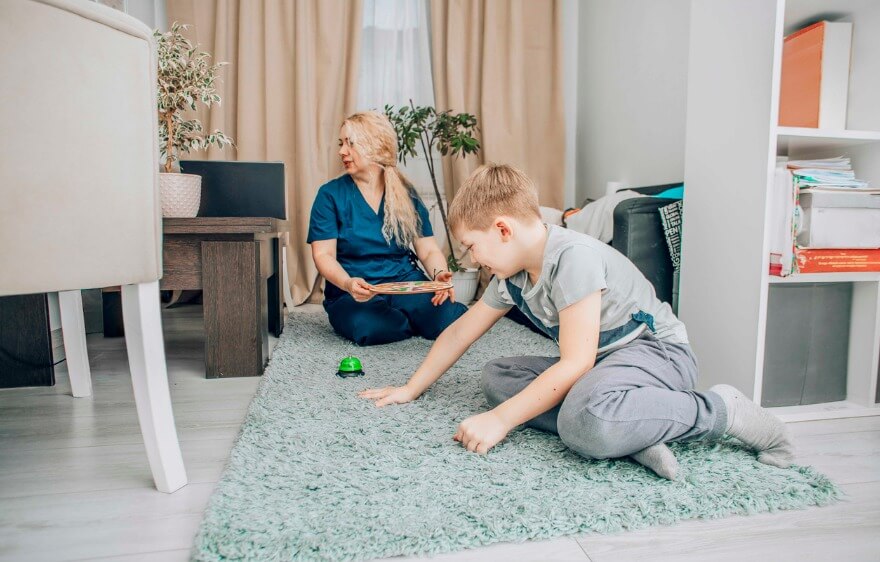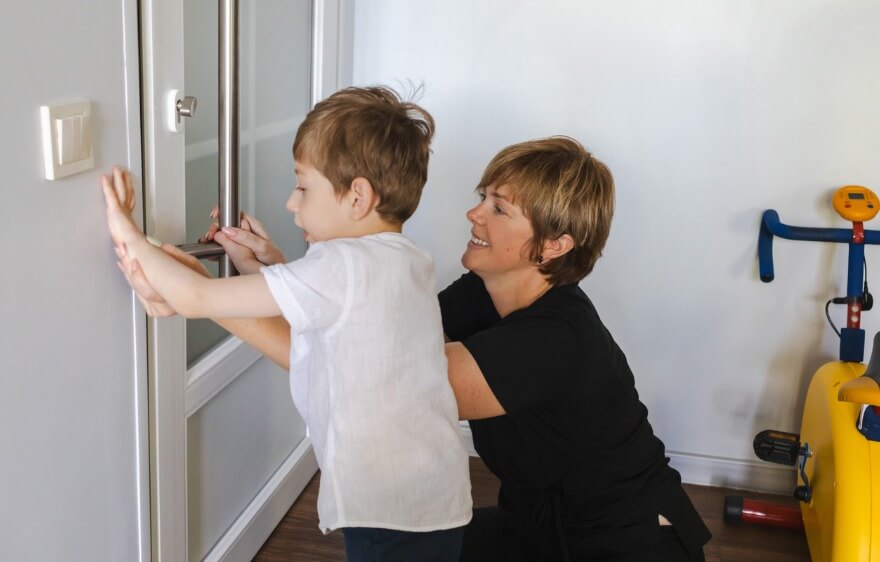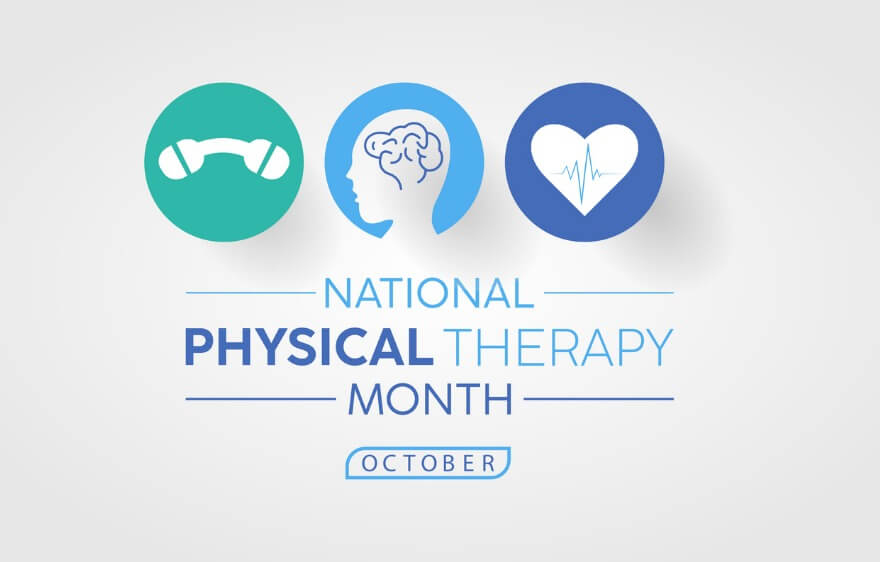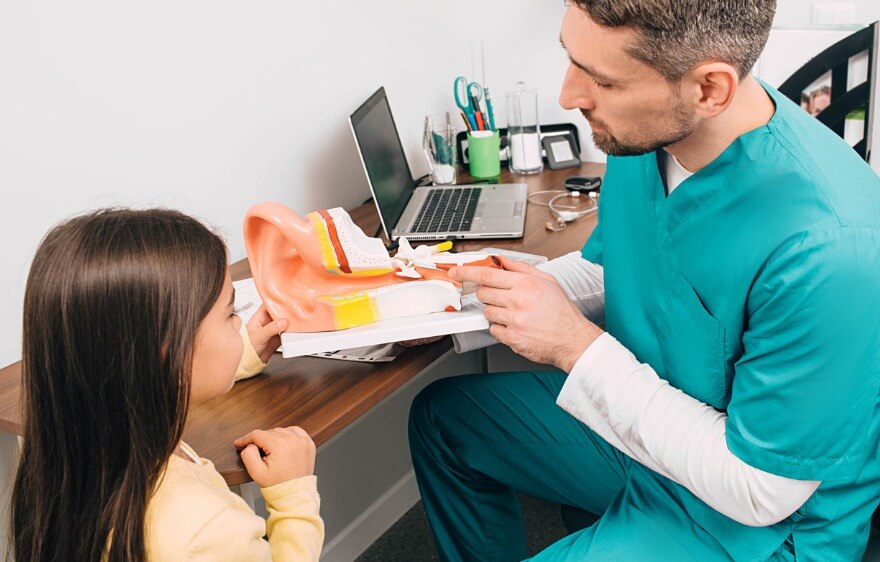When your child faces developmental delays or physical challenges, navigating therapy options can feel overwhelming. One of the most common questions parents ask is about the difference between occupational therapy and physical therapy. At first glance, these therapies can seem similar. Both support children in improving their skills and achieving greater independence.
But each plays a distinct role in your child’s development and well-being.
Understanding occupational therapy versus physical therapy is essential in making informed decisions about your child’s care. In this guide, we’ll walk you through the differences and similarities between the two, particularly how they relate to pediatric care. We’ll also explore when a child might need one, the other, or both.
Understanding Occupational Therapy
Occupational therapy, often referred to as OT, helps children gain independence in the tasks they need or want to do in daily life. For kids, “occupations” are not jobs, but rather essential activities like playing, dressing, writing, eating, and participating in school or family routines.
Pediatric occupational therapists are highly trained to support children in building the fine motor, sensory processing, cognitive, and self-care skills that help them thrive at home, school, and in the community. A key focus in pediatric OT is enabling kids to engage in age-appropriate activities by addressing delays, disorders, or difficulties that interfere with development.
For example, a child with fine motor challenges might struggle with using scissors or holding a pencil. A child with sensory integration difficulties may be overwhelmed by loud sounds or certain clothing textures. An occupational therapist would design personalized interventions to support that child’s specific needs, helping them gradually build confidence and capability.
Occupational Therapy Goals
Play-based therapy is a hallmark of pediatric OT. Rather than feeling like a typical appointment, sessions often look like creative playtime. This approach helps children stay engaged and allows therapists to meet developmental goals in a fun, meaningful way.
Common areas addressed by pediatric occupational therapy include:
- Fine motor skills, such as buttoning a shirt or using utensils
- Handwriting and visual-motor integration
- Sensory processing challenges
- Self-care routines, such as bathing, dressing, brushing teeth
- Emotional regulation and executive functioning skills
- Feeding and oral motor skills
When parents are exploring occupational therapy versus physical therapy, understanding the emphasis OT places on everyday tasks and functional participation is key.
Understanding Physical Therapy
Physical therapy, or PT, centers on helping children improve movement, strength, balance, and coordination. Pediatric physical therapists focus on gross motor development — things like crawling, walking, running, jumping, and climbing stairs. If your child has difficulty moving their body in a coordinated and safe way, a physical therapist may be the right professional to help.
PT is especially important for children with conditions that affect their muscle tone, posture, or mobility. Whether a child has cerebral palsy, muscular dystrophy, a developmental delay, or a sports injury, pediatric physical therapists work to maximize physical function and independence.
Physical Therapy Goals
One of the most noticeable areas where PT supports children is in achieving developmental milestones. For example, if a toddler isn’t walking by 18 months, a pediatric PT may assess their muscle strength and motor planning and develop a plan to build the necessary skills.
Like OT, physical therapy for children often involves play-based, engaging activities. Exercises may be disguised as games, obstacle courses, or fun challenges that encourage kids to move and explore in therapeutic ways.
Common goals of pediatric physical therapy include:
- Improving posture and alignment
- Building muscle strength and endurance
- Enhancing balance and coordination
- Increasing flexibility and range of motion
- Promoting safe mobility and gait training
- Supporting motor milestones, such as crawling, sitting, walking
When considering occupational therapy versus physical therapy, PT is typically the choice when your child needs support with movement, strength, and physical endurance.
Occupational Therapy Versus Physical Therapy: Key Differences and Goals
Now that we’ve explored each field on its own, let’s break down the key differences between occupational therapy and physical therapy — particularly when it comes to pediatric care. These distinctions can help clarify which type of therapy, or combination of therapies, may best support your child’s unique needs.
1. Primary Focus
While both therapies aim to improve a child’s independence, they focus on very different aspects of development.
- Occupational Therapy: Centers on helping children succeed in daily routines and activities, such as getting dressed, feeding themselves, and participating in school and play. The goal is to improve a child’s functional independence in the tasks that are meaningful to their daily life.
- Physical Therapy: Targets the physical ability to move and navigate the environment. The focus is on improving strength, balance, mobility, and overall physical function to support independence and safety in movement.
2. Skill Areas Addressed
The specific skills each therapy addresses are a major point of difference when considering occupational therapy versus physical therapy.
- OT: Focuses on fine motor skills, such as grasping small objects or using utensils, as well as hand-eye coordination, visual perception, sensory processing, emotional regulation, and basic self-care skills like brushing teeth or tying shoes.
- PT: Focuses on gross motor skills like walking, running, jumping, and climbing stairs. It also targets posture, muscle tone, core strength, range of motion, flexibility, balance, and coordination for safe and efficient movement.
3. Therapeutic Techniques
Though both therapies use play-based strategies, their techniques differ based on the goals of therapy.
- OT: May use structured play activities to support sensory processing, strengthen hand muscles, or improve focus. OT interventions may include sensory integration therapy, task segmentation, visual-motor exercises, use of adaptive equipment, and practicing daily life skills.
- PT: May use guided exercises to stretch tight muscles or strengthen weak ones, often incorporating games that encourage large movements. Techniques include mobility training, stretching routines, gait training, balance and stability exercises, and manual therapy to improve range of motion.
4. Tools and Equipment
The tools used in each therapy session often reflect the kind of skills being targeted.
- OT: Common tools include therapy putty, pencil grips, fine motor toys, adaptive scissors, fidget items, swings or crash pads for sensory input, and feeding or dressing aids to help with self-care tasks.
- PT: Typically involves equipment that supports physical strength and movement, such as therapy balls, balance beams, resistance bands, climbing structures, walkers, gait trainers, and orthotic braces when needed.
5. Type of Independence Being Developed
Although both therapies aim to help children become more independent, the type of independence they focus on is different.
- OT: Encourages independence in completing everyday life tasks that require coordination, focus, and self-regulation. This might mean helping a child button their shirt, use a fork, or stay calm in a noisy classroom.
- PT: Builds independence in physical movement and mobility, helping children get from place to place safely and confidently. This might include walking without assistance, navigating playground equipment, or climbing stairs.
Understanding these core differences is essential when weighing occupational therapy versus physical therapy for your child. While both support development, they do so in complementary ways, often working best when combined into a coordinated care plan that treats the child as a whole.
What Occupational Therapy and Physical Therapy Have in Common
Although OT and PT have different focuses, they share many similarities and often work together as part of a child’s care team. Both aim to help children become as independent and capable as possible. Each therapy is goal-driven, evidence-based, and individualized to suit a child’s specific challenges and developmental stage.
Both OTs and PTs often collaborate closely with families, educators, and other healthcare providers. Their work is child-centered and holistic, taking into account emotional, physical, and social development.
Another important similarity is that both therapies use play as a central component, especially in pediatric care. Through fun, engaging activities, therapists can support skill-building in ways that feel natural and enjoyable for children.
This overlap can make it challenging for parents to decide which therapy is right. Understanding the scope of each and working with a pediatrician or developmental specialist can help determine the best course of action.
When to See a Pediatric Occupational Therapist
If you’re wondering whether your child might benefit from OT, look for signs related to difficulties in completing daily activities or handling sensory input. You may want to explore occupational therapy versus physical therapy if you notice any of the following:
- Trouble with handwriting or using school tools like scissors
- Difficulty dressing, brushing teeth, or feeding themselves
- Poor fine motor skills or weak hand muscles
- Overreaction or underreaction to sounds, textures, lights, or touch
- Avoiding messy play or becoming distressed in busy environments
- Difficulty staying focused, organized, or calm
- Picky eating related to textures, smells, or chewing ability
An occupational therapist can assess your child’s functional abilities and create a plan that supports independence and emotional regulation.
When to See a Pediatric Physical Therapist
On the other hand, if your concerns are more about physical strength, movement, or developmental milestones, a pediatric PT may be the right starting point. Consider physical therapy if you observe:
- Delays in crawling, sitting, standing, or walking
- Trouble with balance, frequent falls, or awkward movement patterns
- Muscle weakness, low muscle tone, or fatigue during physical activity
- Poor posture or coordination
- Challenges participating in physical play or sports
- Pain during movement or after minor exertion
A pediatric physical therapist will evaluate your child’s movement patterns and physical function and tailor a program that builds strength, endurance, and confidence in motion.
When a Combined Approach May Be Best
In some cases, occupational therapy versus physical therapy isn’t an either/or situation. Many children benefit from a combined care plan that includes both disciplines.
For example, a child with cerebral palsy may need PT to strengthen muscles and improve mobility, while also needing OT to develop fine motor control and self-care skills. A child with autism may benefit from PT to improve body awareness and balance, while OT helps with sensory regulation and executive functioning.
When therapies are coordinated, your child can make more integrated and comprehensive progress. Communication between therapists ensures that treatment goals complement one another and that your child’s entire development is supported.
In some cases, your pediatrician may recommend starting with one therapy and then adding the other as new needs emerge. Many pediatric therapy providers, including Care Options for Kids, offer both services, making it easier for families to access cohesive care and create integrated therapy plans.
Supporting Your Child’s Growth Through Therapy
Understanding occupational therapy versus physical therapy empowers you as a parent to advocate for your child’s needs. While each therapy targets different areas of development, both are vital tools in helping children reach their full potential.
Care Options for Kids is dedicated to linking families with caring and experienced physical therapists and occupational therapists to reach developmental goals and improve health and wellness. Our team of specialists is committed to providing outstanding therapy services, helping children reach their full potential and flourish in their everyday lives.
If you’re unsure which path to take, don’t hesitate to reach out for a consultation. An initial evaluation can clarify which therapy — or combination of therapies — will best support your child’s growth and happiness.
As a parent, your observations and instincts are incredibly valuable. If you sense that your child is struggling with daily tasks, movement, or sensory experiences, early intervention can make a significant difference.
Whether through occupational therapy, physical therapy, or both, your child has the opportunity to build skills, confidence, and independence in ways that will serve them for a lifetime.
Schedule Your Child’s Care Assessment Today
At Care Options for Kids, we understand the unique challenges of caring for a child with health conditions. Our dedicated team of pediatric therapists is here to support your family with compassionate, expert care tailored to your child’s needs. Contact us today to schedule an assessment and learn how we can help you navigate this journey with confidence and care.
Click here to start your journey to better care.
This post is for educational and informational purposes only. You should always speak with your own therapist before implementing this information on your own.






